

Damion Smy
Nissan Juke EV will use Leaf platform, due in 2026 - report
7 Hours Ago

Design Contributor
David Gallego is an automotive designer based in Barcelona, Spain. He is currently working at EDAG Spain, but he has also worked as an engineer and as a designer for Audi’s motorsport activities.
His hobbies include photography, painting, sketching, 3D modelling, and karting.
The Toyota H2+ Concept is a design study for 2030. It proposes a sporty direction for the Japanese brand, in the form of a hydrogen-electric grand tourer with three seats and supercar styling cues.
David was inspired by Toyota’s past sports cars such as the 2000GT (1967-1970) and the Supra A80 (1993-2002), while infusing elements from the brand’s modern design language.
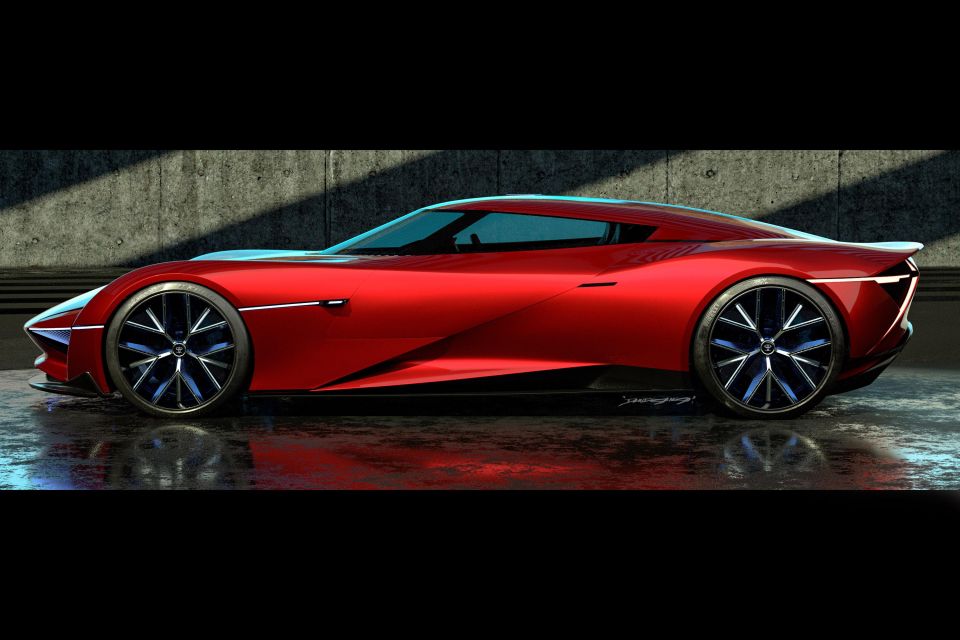
Right from the first glance, the proportions of the car look quite exaggerated. The H2+ measures 4381mm long, 1813mm wide and just 1010mm tall. It has a long wheelbase of 2615mm which would fit a premium sedan, relatively short overhangs, a long hood, large diameter wheels, and a dropping roofline towards the rear.
The profile is characterised by a sharp crease on the bodywork that follows the line of the gullwing doors and creates an inlet. The side sills emerge from this opening similar to an origami sculpture, while the rest of the bodywork flows towards the toned rear arches.
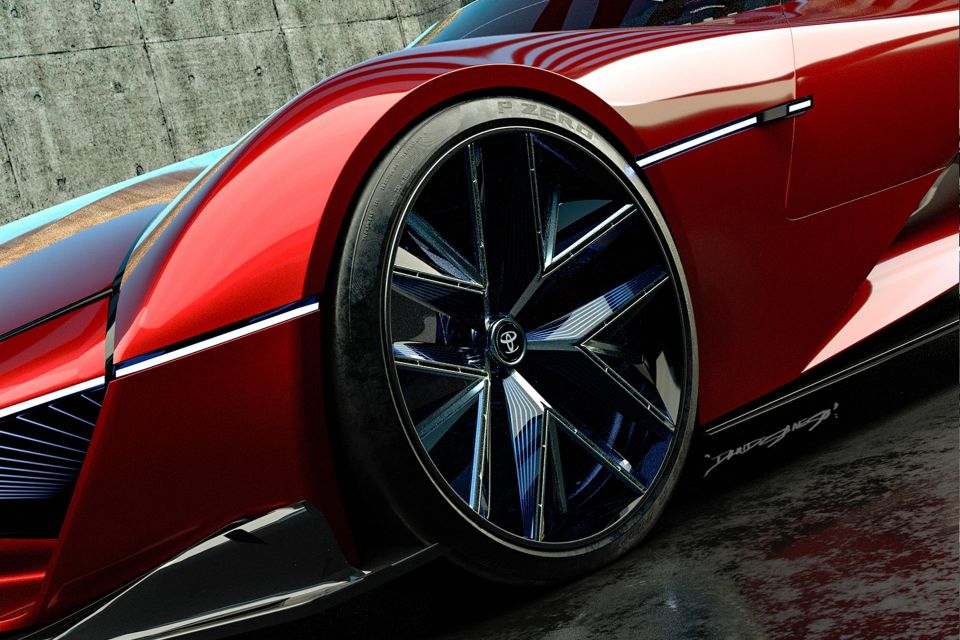
The side window graphic merging with the heavily inclined and curved windshield is similar – although much more aggressive – to the glasshouse of the GR Supra, which in turn was inspired by the 2000GT.
The multi-spoke wheels exclusively designed for this concept were inspired by David Letellier’s Versus kinetic sound installation, combining blue accents with black and shiny chrome.

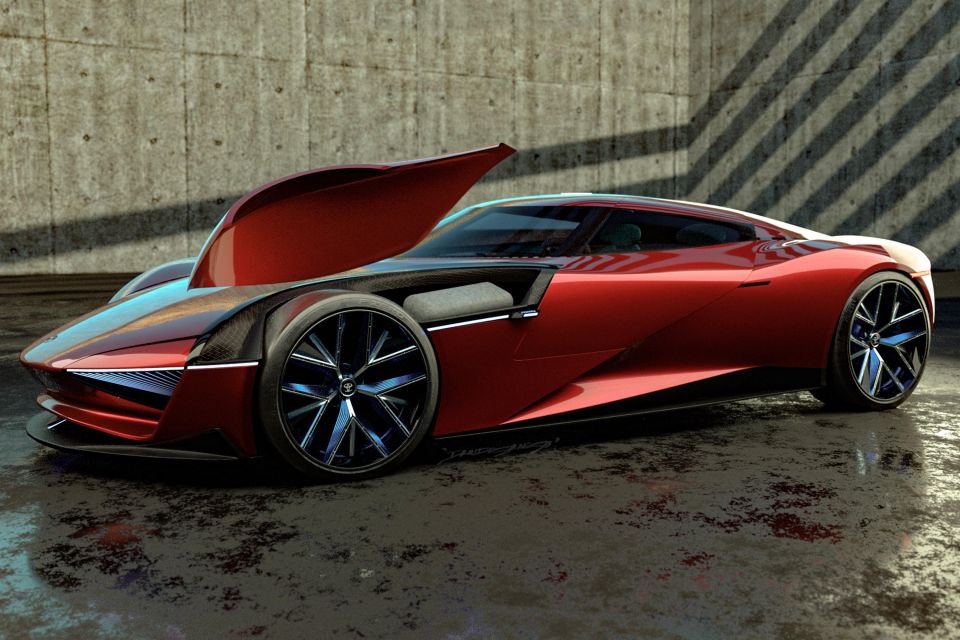
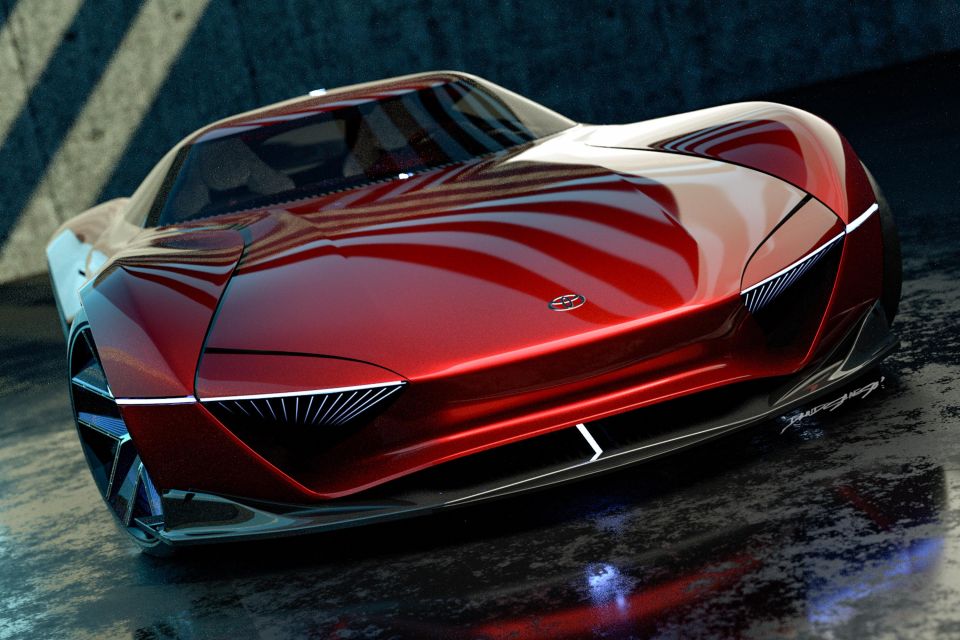
The front end of the H2+ is characterised by the low nose and the pronounced wide fenders reaching higher than the bonnet as a nod to the 2000GT. Another thing about the front fenders is that they open up to reveal storage compartments that can fit a suitcase on each side.
The headlights with LED graphics are neatly integrated within the air intakes and resemble those of the A80 Supra thanks to the shape of their body-coloured covers. The thin horizontal light strip extends the line of the nose to the profile, reaching the door line that is an extension of the A-pillar, with its edge incorporating the side cameras.
The sculpted front bumper with a negative angle, is accompanied by a large carbon-fibre splitter supported by an illuminated central bar.

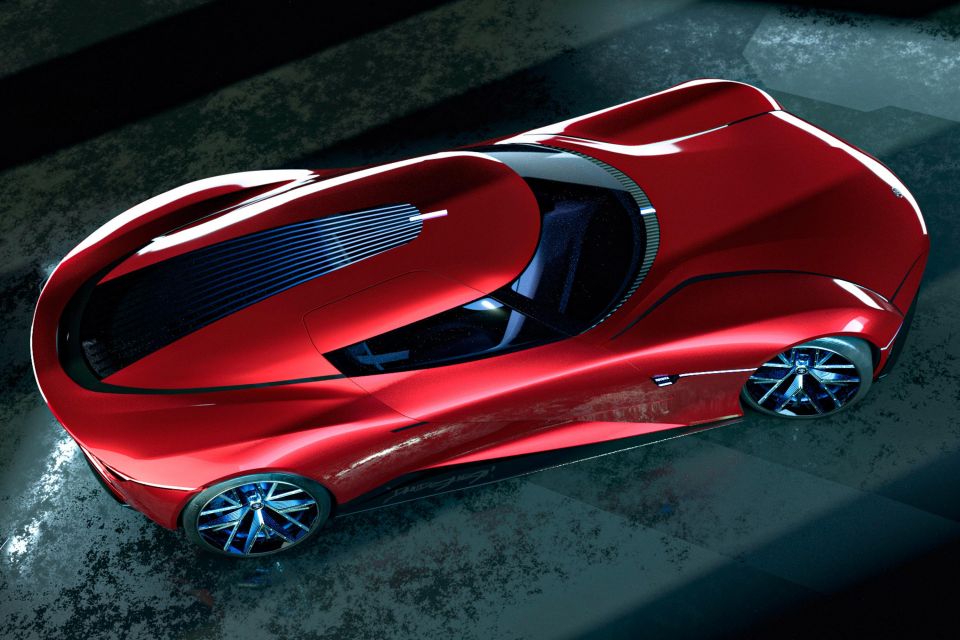
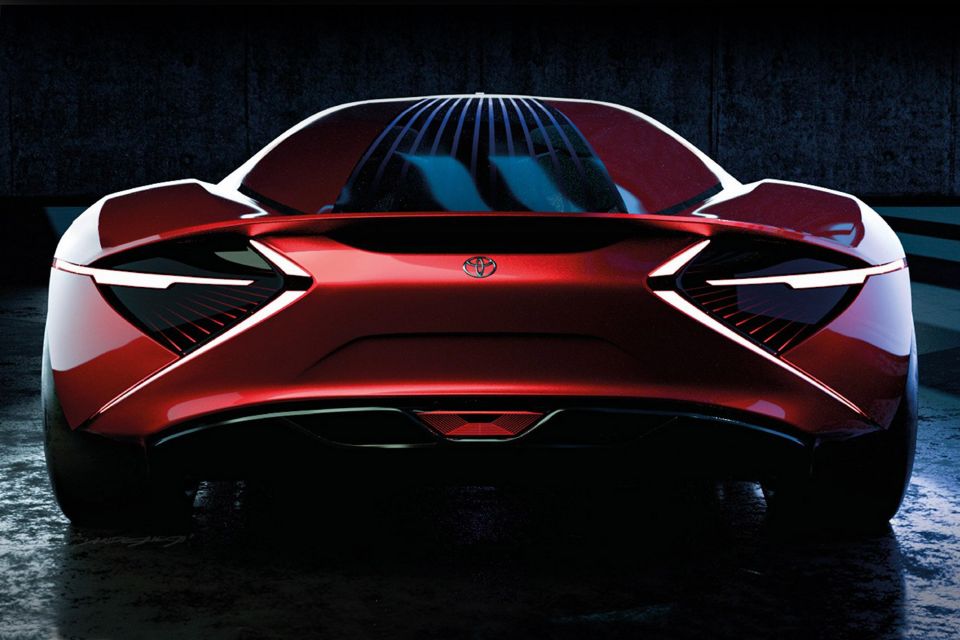
The rear end of the car is pretty dramatic. The narrow rear windshield also works as a sunroof and has blue graphics lighting up in the dark.
The pronounced shoulders above the rear wheels lead to an almost duck-tail spoiler with a middle part that detaches from the tail.
Below we find two large inlets with transparent covers, housing the two-part full-LED taillights. Those consist of horizontal strips expanding towards the profile, and curved lines creating an X pattern.
At the bottom part of the rear bumper is a rather discreet diffuser with a central lighting graphic resembling an exhaust.
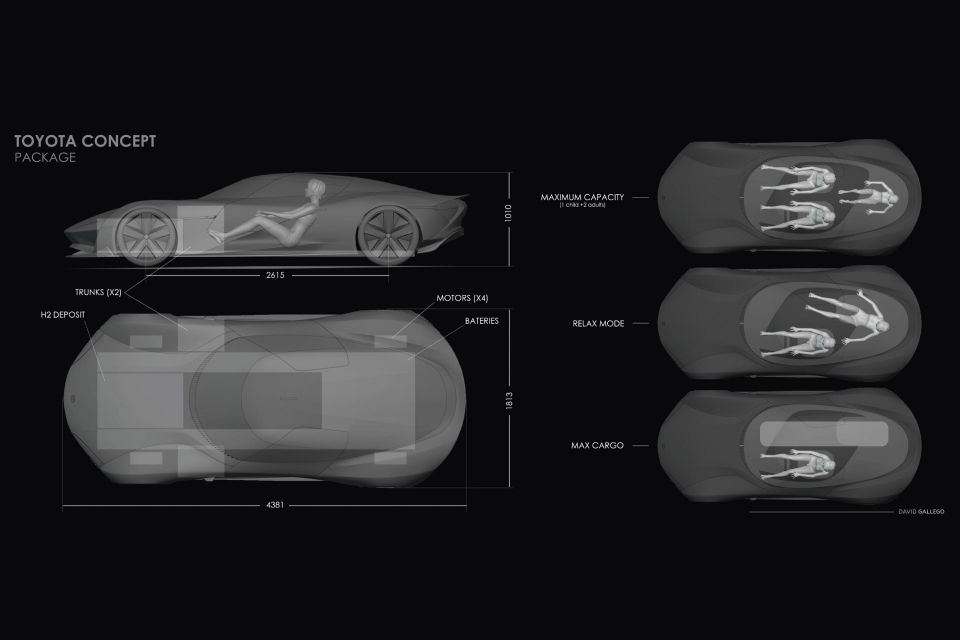
David hasn’t provided us with renderings of the interior, however he has published some layout drawings showing the packaging. As we can see he envisioned the concept car with four electric motors (one for each wheel), large batteries, and hydrogen fuel cells working as a range-extender.
The storage compartments behind the front wheels free up some space at the back for an extra passenger. That makes the Toyota H2+ a three-seater in “maximum capacity”, a two-seater in “relax mode” and one-seater with extra luggage space in “max cargo”.
Having said that, we doubt that an adult would fit at the back given the ultra-low height of the car and the need for battery placement in the floor. The small door openings would also make it impossible for a person to reach that space, making it more usable as room for cargo.

The H2+ Concept is an interesting take into a possible future halo model for Toyota that could be sporty as a supercar and premium as a grand tourer while incorporating hydrogen fuel-cell technology. David has done a great job in balancing the past with the future of Toyota in terms of design language.
There is always room for improvement with less exaggeration in its proportions and a more sensible packaging, however the H2+ hits the spot for a futuristic concept car designed to make a statement.
Toyota is in the process of re-establishing itself as a sporty car manufacturer, with a growing range of Toyota Gazoo Racing models. After the GR Supra, the GR Yaris and the upcoming GR Corolla and GR 86, we are expecting the Toyota GR Super Sport – a limited production hybrid hypercar with racing pedigree.
This will be a halo performance model for the brand that is clearly steering away from its past image both in terms of design and driving dynamics.
David’s proposal might not be as performance-focused as the upcoming hypercar, but it’s closer in line with the Toyota Alessandro Volta (2004), a concept designed by Italdesign Giugiaro as a hybrid three-seater supercar wearing the Toyota badge.
If you liked the Toyota H2+ Concept you can find more of David’s work on his Instagram or Behance profiles.
Where expert car reviews meet expert car buying – CarExpert gives you trusted advice, personalised service and real savings on your next new car.


Damion Smy
7 Hours Ago


Damion Smy
10 Hours Ago


Damion Smy
14 Hours Ago


Damion Smy
15 Hours Ago


Damion Smy
15 Hours Ago


Damion Smy
16 Hours Ago